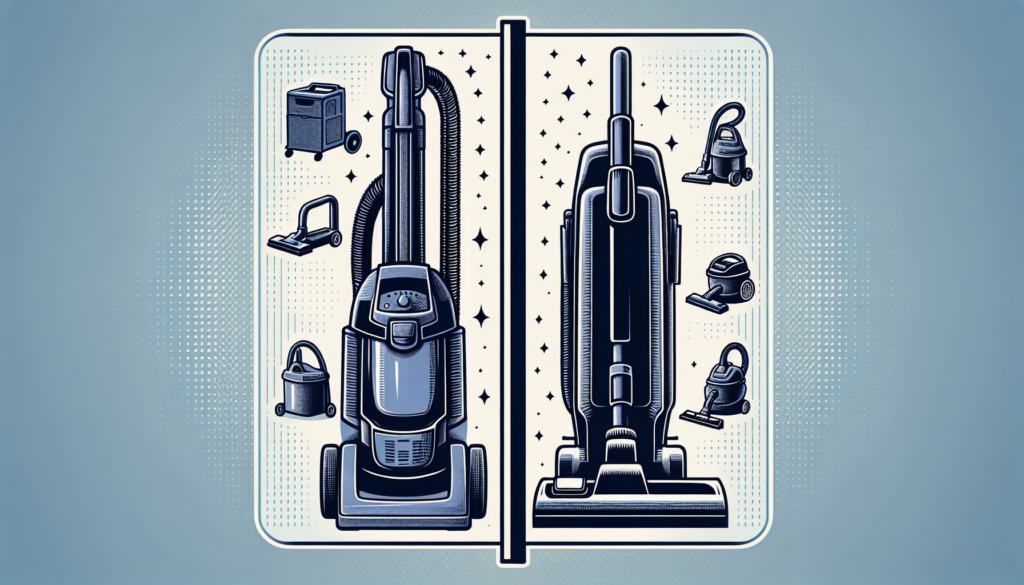Are you considering buying a new home security system? If so, you’ve come to the right place. At BuySellCloud.com, we understand the importance of feeling safe and secure in your own home. That’s why we’ve compiled a comprehensive guide to help you make an informed decision when it comes to purchasing a home security system. With our expert insights and tips, you can confidently choose the perfect product that meets your needs and gives you peace of mind. So, whether you’re a first-time buyer or looking to upgrade your existing system, we’re here to help you every step of the way.

Types of Home Security Systems
Monitored Systems
Monitored home security systems are connected to a central monitoring station that keeps an eye on your home 24/7. When a sensor is triggered, such as a door/window opening or motion detected, the system sends an alert to the monitoring center, who will then contact you and potentially dispatch emergency personnel if needed. This type of system provides an extra layer of assurance, as professionals are always monitoring your home for any potential threats.
Unmonitored Systems
Unmonitored home security systems, on the other hand, do not have a central monitoring station. Instead, they rely on alerting you directly when a sensor is triggered. You will receive a notification on your smartphone or another designated device, allowing you to take appropriate action. While this type of system does not involve monthly monitoring fees, it’s important to note that you are solely responsible for responding to any emergency situations.
Wireless Systems
Wireless home security systems utilize wireless technology to connect the various components of the system, such as sensors and cameras. They transmit data and signals wirelessly, making installation easier and more flexible. Wireless systems also eliminate the need for drilling holes or running wires throughout your home, providing a clean and seamless installation process. Additionally, wireless systems are typically more convenient in terms of maintenance, as they can be easily expanded or relocated if needed.
Wired Systems
Wired home security systems, as the name suggests, require physical wiring to connect the different components of the system. This type of system is typically more suitable for new construction or homes that already have pre-installed wiring. While wired systems may require professional installation due to the wiring complexity, they also offer a higher level of reliability and stability, as they are not subject to potential wireless interferences.
Smart Home Systems
Smart home security systems combine the benefits of home security with the convenience and automation of smart technology. These systems not only monitor your home for potential threats but also offer the ability to control and monitor your security system remotely through a smartphone app or other connected devices. With a smart home security system, you can arm and disarm your system, receive customized alerts, and even integrate other smart devices, such as smart locks or lights, to enhance your home’s overall security.
Factors to Consider
Budget
Before purchasing a home security system, it’s important to determine your budget. Consider both the upfront costs of equipment and installation, as well as any ongoing monthly monitoring fees. It’s worth investing in a reliable system that fits within your budget to ensure the safety of your home and loved ones.
Coverage Area
The size and layout of your home will play a role in determining the appropriate security system. Consider the number of entry points, such as doors and windows, that need to be protected, as well as the size of the property that would require surveillance. Ensure that the system you choose can effectively cover your entire home to maximize security.
Installation Process
Think about whether you prefer a professional installation or are open to a DIY setup. Professional installation may provide peace of mind knowing that experts have set up your system correctly, but it often comes at an additional cost. On the other hand, many modern home security systems are designed for easy DIY installation, allowing you to save on installation fees and have more control over the setup process.
Scalability
Consider whether the security system allows for scalability and expansion. As your needs and preferences change over time, it may be beneficial to choose a system that can easily accommodate additional sensors, cameras, or other components. This way, you can customize and adapt your security system as needed without having to replace the entire system.
Integration with Other Devices
If you already have smart devices or home automation systems in place, look for a home security system that offers seamless integration. This will allow you to control and monitor all your devices from a single platform, maximizing convenience and streamlining your overall home security setup.

Components of a Home Security System
Control Panel
The control panel serves as the command center of your home security system. It allows you to arm and disarm the system, adjust settings, and receive notifications. The control panel is typically located in a central area of the home for easy access.
Sensors
Sensors are crucial components of a home security system as they detect and monitor activity within your home. Door and window sensors notify the system when they are opened or closed, while motion sensors detect any movement within the designated area. Other types of sensors, such as glass break sensors or smoke detectors, can also be included depending on your needs.
Alarms
Alarms are designed to alert you, your family, or anyone nearby in the event of a security breach. When triggered, alarms emit a loud sound to deter intruders and alert everyone in the vicinity. Some alarms may also have visual or silent notifications, depending on your preferences.
Cameras
Cameras provide visual surveillance of your home and can deter potential intruders. They can be placed both indoors and outdoors to monitor specific areas or provide comprehensive coverage. Modern security cameras often come equipped with features such as night vision, motion detection, and remote access so you can view live footage or recorded videos from anywhere.
Keypad or Key Fob
A keypad or key fob allows you to easily arm and disarm your home security system without having to access the control panel directly. Keypads are typically mounted near the main entrance or in a central area, while key fobs can be carried with you for quick and convenient access.
Motion Detectors
Motion detectors use infrared technology to detect movement within a specific area. They are typically placed in strategic locations to cover areas of high traffic or potential entry points. Motion detectors are an essential part of a comprehensive home security system as they can trigger alarms and notify you of any unexpected activity.
Security Signage
Displaying security signage around your property can act as a deterrent to potential intruders. The signs indicate that your home is protected by a security system, making it less likely for criminals to target your property. Additionally, visible signage increases the overall perception of security in your neighborhood.
Selecting the Right Provider
Reputation and Reliability
When choosing a home security system provider, consider their reputation and reliability. Look for companies that have been in the industry for a while and have positive customer reviews. Research their track record of providing reliable and trustworthy security solutions.
Customer Service
The quality of customer service provided by a home security system provider is an important factor to consider. Ensure that the company offers responsive and helpful customer support, as you may need assistance with installation, troubleshooting, or general inquiries. Reading customer reviews and researching their customer service practices can give you insight into their level of support.
Monitoring Options
If you opt for a monitored system, inquire about the different monitoring options available. Some companies may offer 24/7 professional monitoring, while others may provide self-monitoring options. Consider which option aligns with your preferences and needs for maximum peace of mind.
Contract Terms and Transferability
Review the contract terms and conditions offered by the provider. Take note of the length of the contract, cancellation policies, and any fees associated with termination. Additionally, consider whether the system is transferable to a new homeowner in case you decide to sell your property.
Warranty
A warranty is an assurance of the quality and reliability of the home security system. Look for providers that offer warranties on their equipment, so you can have peace of mind knowing that any faulty or damaged components will be repaired or replaced.

Features to Consider
Remote Access and Control
Remote access and control allow you to control and monitor your home security system from anywhere. With a smartphone app or other connected devices, you can arm or disarm the system, receive notifications, and even view live video footage remotely. This feature is especially convenient when you’re away from home or need to provide access for trusted individuals, such as house sitters or delivery personnel.
Video Surveillance
Video surveillance is an important feature to consider in a home security system. High-quality cameras with recording capabilities provide visual evidence in the event of an incident, helping with identification and potential prosecution. Look for cameras that offer features such as high-resolution imaging, night vision, and the ability to store and access video recordings.
Two-Way Audio
Some home security systems offer two-way audio capabilities, allowing you to communicate with anyone in your home remotely. This can be useful for monitoring children, pets, or even warning potential intruders that they are being watched. Two-way audio ensures that you can interact with your home in real-time, even when you’re not physically present.
Home Automation Integration
Integrating your home security system with home automation devices offers a seamless and connected experience. This feature allows you to control and monitor not only your security system but also other smart devices such as lights, thermostats, and smart locks. Syncing your devices can enhance the overall convenience, efficiency, and energy savings of your home.
Smartphone Alerts
Smartphone alerts keep you informed of any activity or changes to your security system. You can receive instant notifications if a sensor is triggered, the system is armed or disarmed, or even if a door is left open. Smartphone alerts allow you to stay connected to your home’s security status, providing peace of mind and prompt action when needed.
Environmental Monitoring
Consider whether the home security system offers environmental monitoring features. Temperature, humidity, and water sensors can help detect any anomalies or potential hazards such as floods or fires. These sensors can trigger alerts and facilitate quick response actions, helping to protect your home from different types of threats.
Panic Button
Having a panic button can be a valuable feature in a home security system. In emergency situations, pressing the panic button can instantly notify the monitoring center and initiate immediate assistance. This feature is particularly useful in situations where you may not be able to make a phone call or need to send a distress signal discreetly.
Choosing the Appropriate Package
Entry-Level Package
An entry-level package typically includes the basic components needed to secure your home. It may consist of a control panel, a few sensors, an alarm, and perhaps a camera. This package is suitable for those who are starting with a limited budget or have smaller homes with fewer entry points to monitor.
Mid-Level Package
A mid-level package often offers additional features and components compared to the entry-level package. It may include more sensors, additional cameras, and potentially remote access capabilities. This package is suitable for those who want more comprehensive coverage and additional features without breaking the bank.
High-End Package
A high-end package encompasses advanced features, multiple cameras, and extensive coverage. It may include features such as video analytics, high-resolution cameras, home automation integration, and professional installation. This package is suitable for those who prioritize top-of-the-line security and advanced technology.
Customizable Packages
Many providers offer customizable packages that allow you to tailor the system to your specific needs. This way, you can select the components and features that are most important to you, ensuring that your security system fits your unique requirements.
Add-Ons and Extra Equipment
Consider whether the provider offers additional add-ons or extra equipment that can enhance the functionality of your home security system. These may include additional sensors, cameras, or even smart devices that can be integrated into the existing system. Being able to expand and customize your system as needed provides flexibility for future upgrades or changes.
Installation Process
Professional Installation
Professional installation involves having trained technicians set up and install your home security system. They will ensure that all components are properly installed, integrated, and functioning correctly. Professional installation provides peace of mind, as experts handle the entire installation process and can address any potential issues or challenges.
DIY Installation
DIY installation allows you to install your home security system yourself. Many modern systems are designed for easy self-installation, with step-by-step instructions and user-friendly interfaces. DIY installation is typically more cost-effective and can be completed at your own pace. However, it requires some technical knowledge and the willingness to take on the responsibility of setting up the system correctly.
Installation Considerations
Before choosing an installation method, consider factors such as your comfort level with technology, the complexity of the system, and your availability. If you opt for professional installation, find out if it’s included in the overall cost or if there are additional fees. With DIY installation, ensure that the system you choose provides adequate support and resources to guide you through the process seamlessly.
Maintenance and Monitoring
Testing and Maintenance
Regular testing and maintenance are essential to ensure that your home security system is working optimally. Follow the manufacturer’s guidelines for testing sensors, cameras, and other components periodically. Check batteries, clean cameras, and ensure that any software updates are installed promptly. Regular maintenance helps prevent malfunctions and ensures that your system is always ready to protect your home.
Monitoring Options
Decide on the kind of monitoring service that best suits your needs. If you opt for professional monitoring, ensure that the monitoring center is staffed 24/7 and has a reliable history of responding to emergencies in a timely manner. If you choose self-monitoring, establish a routine for regularly checking on alerts and notifications to ensure that you are aware of any potential threats.
Considerations for Renters
Portability
For renters, portability is a crucial factor to consider. Look for home security systems that are easily movable and can be installed without causing damage to the property. Wireless systems are often the best option for renters, as they can be relocated easily when moving to a new rental property.
Wireless Installation
As mentioned earlier, wireless installation is ideal for renters as it eliminates the need for drilling holes or running wires. Wireless systems offer flexibility and can be set up without causing any permanent modifications to the rental property. This makes it easier to install and remove the system when needed.
Permission from Landlord
Before installing a home security system in a rental property, ensure that you have permission from the landlord. Check the lease agreement or communicate directly with the landlord to understand any restrictions or requirements related to installing security systems. Open communication and cooperation with your landlord will help ensure a smooth installation process.
Comparing Prices and Packages
Price Comparison
When comparing prices, consider not only the upfront cost of the equipment but also any ongoing monthly fees. Compare the costs between different providers and determine which one offers the best value for the features and level of security provided.
Package Inclusions
Pay attention to the specific components included in each package to ensure that they align with your security needs. Some packages may focus more on video surveillance, while others may emphasize sensors and alarms. Choose a package that provides a good balance of the components that are essential for securing your home.
Monthly Monitoring Fees
If you opt for a monitored system, consider the monthly monitoring fees. These fees cover the cost of professional monitoring and potentially additional services such as cellular backup or home automation. Compare the monthly fees between different providers and determine which option fits within your budget while still meeting your security requirements.
In conclusion, when buying a new home security system, it’s important to consider the different types of systems available, such as monitored or unmonitored, wireless or wired, and smart home systems. Factors like budget, coverage area, installation process, scalability, and integration with other devices should also be taken into account. Understanding the various components of a home security system, choosing the right provider based on reputation, customer service, monitoring options, contract terms, and warranty, and considering features like remote access, video surveillance, two-way audio, home automation integration, smartphone alerts, environmental monitoring, and panic buttons are crucial. Further, selecting the appropriate package, whether entry-level, mid-level, high-end, customizable, or with additional add-ons, and deciding between professional installation or DIY installation require careful consideration. Maintenance and monitoring are essential for ensuring the system’s continued functionality, and renters should consider portability, wireless installation, and discussing permissions with their landlords. Finally, comparing prices and packages, including the upfront cost, package inclusions, and monthly monitoring fees, will help in making an informed decision when buying a new home security system. By considering these factors and understanding the various options available, you can choose a home security system that best fits your needs and provides peace of mind for you and your loved ones.




